
The Enchanting Gili Islands: Indonesia's Hidden Gems
Discover the Gili Islands: A Trio of Tropical Bliss, Perfect for Divers, Beach Lovers, and Adventure Seekers in Indonesia.
Located off the northwest coast of Lombok, the Gili Islands are a tropical paradise consisting of three small isles: Gili Trawangan, Gili Meno, and Gili Air. Each island has its own unique charm, making the Gili Islands a versatile destination for all types of travelers. Gili Trawangan, the largest of the three, is famous for its vibrant nightlife and bustling beach bars. It's the go-to spot for party lovers and those seeking lively social scenes. By day, visitors can enjoy snorkeling, diving, and exploring the local markets. Gili Meno, the middle island, offers a more tranquil experience. Known for its serene beaches and crystal-clear waters, it's perfect for honeymooners and those craving a peaceful getaway. The island also boasts a turtle sanctuary, making it a fantastic spot for nature enthusiasts. Gili Air combines the best of both worlds, offering a relaxed atmosphere with enough amenities to keep visitors entertained. It’s ideal for families and solo travelers alike, featuring a mix of cozy cafes, yoga retreats, and stunning coral reefs for diving and snorkeling adventures.
Local tips in Gili Islands
- Bring cash as ATMs can be scarce and card payments are not always accepted.
- Consider staying overnight on each island to fully experience their unique atmospheres.
- Rent a bicycle or take a horse-drawn carriage for easy island transportation.
- Respect local customs and dress modestly when away from the beach.
- Stay hydrated and apply reef-safe sunscreen regularly to protect yourself and the environment.
The Enchanting Gili Islands: Indonesia's Hidden Gems
Located off the northwest coast of Lombok, the Gili Islands are a tropical paradise consisting of three small isles: Gili Trawangan, Gili Meno, and Gili Air. Each island has its own unique charm, making the Gili Islands a versatile destination for all types of travelers. Gili Trawangan, the largest of the three, is famous for its vibrant nightlife and bustling beach bars. It's the go-to spot for party lovers and those seeking lively social scenes. By day, visitors can enjoy snorkeling, diving, and exploring the local markets. Gili Meno, the middle island, offers a more tranquil experience. Known for its serene beaches and crystal-clear waters, it's perfect for honeymooners and those craving a peaceful getaway. The island also boasts a turtle sanctuary, making it a fantastic spot for nature enthusiasts. Gili Air combines the best of both worlds, offering a relaxed atmosphere with enough amenities to keep visitors entertained. It’s ideal for families and solo travelers alike, featuring a mix of cozy cafes, yoga retreats, and stunning coral reefs for diving and snorkeling adventures.
When is the best time to go to Gili Islands?
Iconic landmarks you can’t miss
Gili Trawangan
Discover the enchanting Gili Trawangan, a vibrant island paradise in Indonesia, perfect for relaxation, adventure, and breathtaking sunsets.
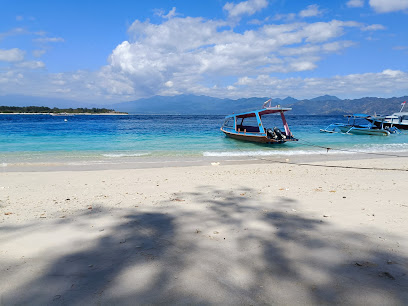
Casa Vintage Beach
Discover the flavors of the Caribbean at Casa Vintage Beach, a stunning restaurant in Gili Indah, North Lombok, offering a unique tropical dining experience.
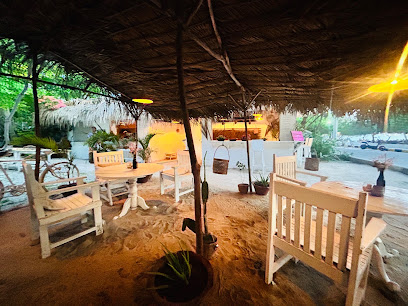
Manta Dive Gili Trawangan
Experience the thrill of diving and the beauty of Gili Trawangan at Manta Dive, your ultimate adventure hub in Indonesia.
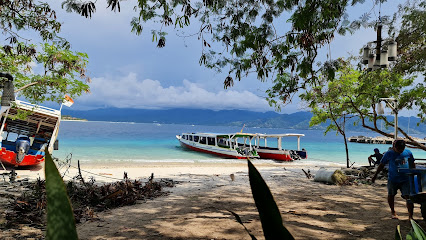
Gili Air
Discover the tranquil beauty of Gili Air, an island paradise in Indonesia known for its stunning beaches, vibrant marine life, and welcoming local culture.
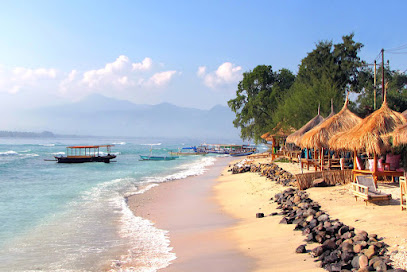
Pondok Santi Estate Luxury Beachside Resort
Experience luxury and tranquility at Pondok Santi Estate, a premier beachside resort on Gili Trawangan, Lombok, perfect for relaxation and adventure.
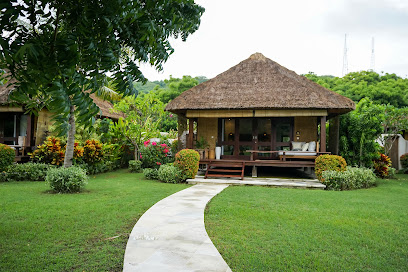
Pelabuhan Gili Trawangan
Explore the vibrant Pelabuhan Gili Trawangan, your gateway to the stunning Gili Islands, offering adventure, culture, and unforgettable experiences.

Private Trip Gili
Discover Gili Indah, a tropical paradise in Indonesia, where pristine beaches meet vibrant coral reefs and rich local culture awaits.
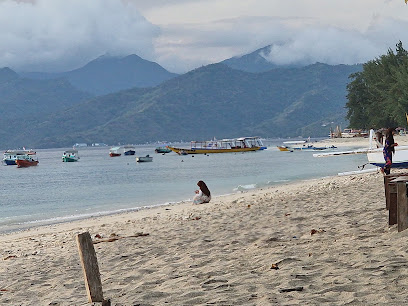
Gili Meno Sea Turtle Sanctuary
Explore the Gili Meno Sea Turtle Sanctuary, a vital conservation site where you can learn about and interact with endangered sea turtles in a beautiful island setting.
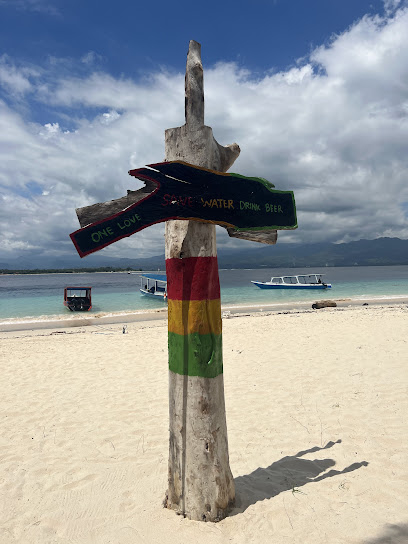
Gili Meno island
Discover Gili Meno: a tranquil island paradise with pristine beaches, vibrant marine life, and breathtaking sunsets, perfect for travelers seeking serenity.

Gili Trawangan Beach
Discover the enchanting beauty of Gili Trawangan Beach, where turquoise waters meet vibrant coral reefs and unforgettable island charm awaits.
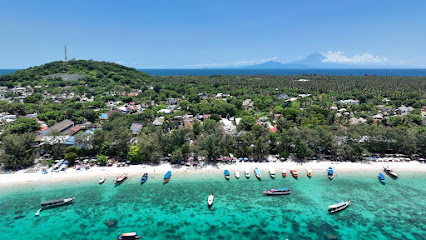
Gili Meno
Discover the untouched beauty of Gili Meno, an Indonesian island paradise known for its tranquil beaches and vibrant marine life.
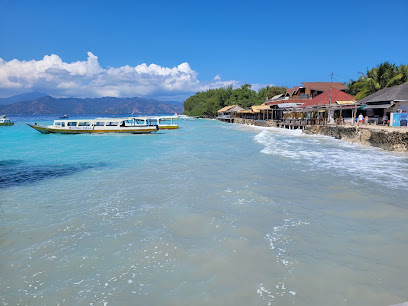
Karma Beach Gili Meno
Experience the flavors of the sea at Karma Beach Gili Meno, where exquisite seafood meets stunning ocean views in a tropical paradise.
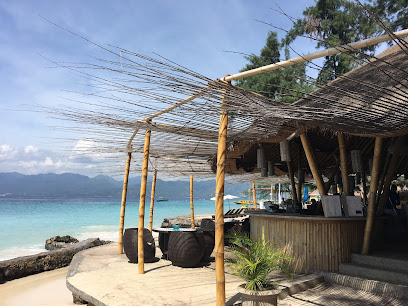
Gili Castle Building 2
Experience the vibrant community and adventure at Gili Castle Building 2, a premier youth hostel in the heart of Gili Trawangan.

Gili Meno beach
Discover the serene beauty of Gili Meno Beach, a tropical paradise with soft sands, clear waters, and vibrant marine life, perfect for relaxation and adventure.
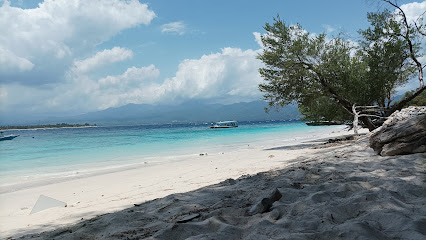
Gili Meno Fresh-water Lake
Experience tranquility at Gili Meno Fresh-water Lake, a serene oasis perfect for swimming and relaxation amidst lush tropical beauty.
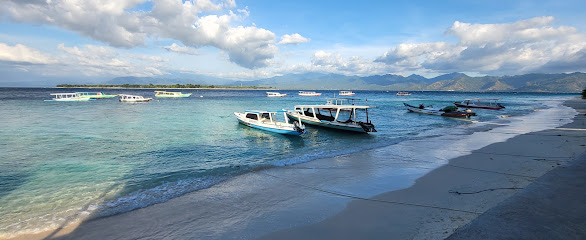
Unmissable attractions to see
Mount Rinjani National Park
Explore the stunning landscapes and rich biodiversity of Mount Rinjani National Park, a premier destination for hiking and adventure in Lombok, Indonesia.
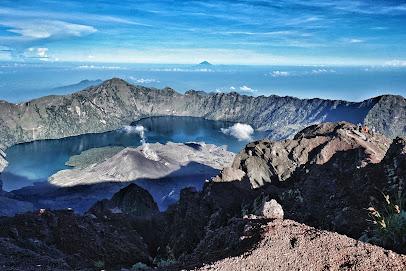
Private Trip Gili
Discover the enchanting Gili Indah, a tropical paradise with stunning beaches, vibrant marine life, and rich cultural experiences in the heart of the Gili Islands.
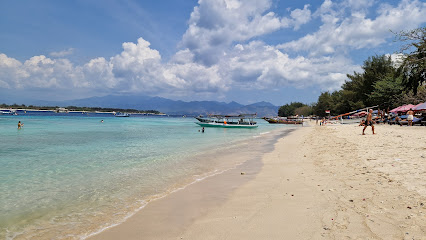
Air Terjun Jeruk Manis
Explore the stunning Air Terjun Jeruk Manis, a hidden waterfall in East Lombok offering breathtaking views and tranquil nature experiences.

Pos 2, TENGENGEAN
Experience the breathtaking landscapes and vibrant culture at Pos 2, Tengengean – a hiker's paradise in Lombok.

Pelawangan Sembalun Camp Site
Experience the breathtaking beauty of Pelawangan Sembalun Camp Site, where adventure and tranquility meet amidst Lombok's stunning landscapes.

Rinjani Hotsprings
Experience the healing power of nature at Rinjani Hotsprings, a tranquil retreat nestled in the lush landscapes of Lombok, Indonesia.

Turtle Snorkeling Area
Explore the Turtle Snorkeling Area in Gili Indah, Lombok - a vibrant marine paradise where you can swim with sea turtles and witness stunning coral reefs.
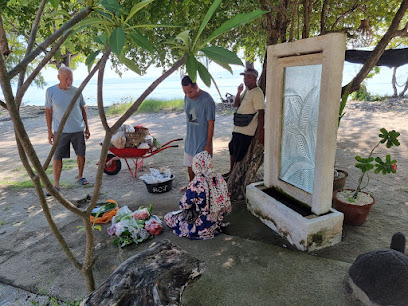
Sendalem Waterfall
Explore the breathtaking Sendalem Waterfall in West Lombok, a hidden paradise known for its stunning cascades and tranquil natural beauty.
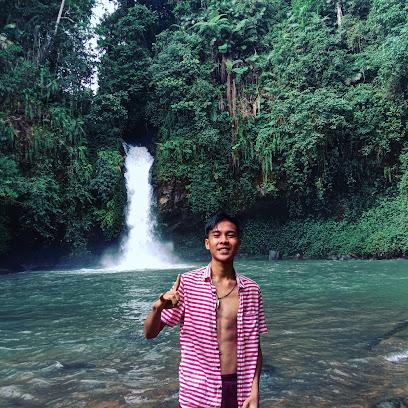
Turtle Paradise
Explore Turtle Paradise in Gili Indah, a tranquil destination known for its stunning beaches, vibrant marine life, and unforgettable snorkeling adventures.
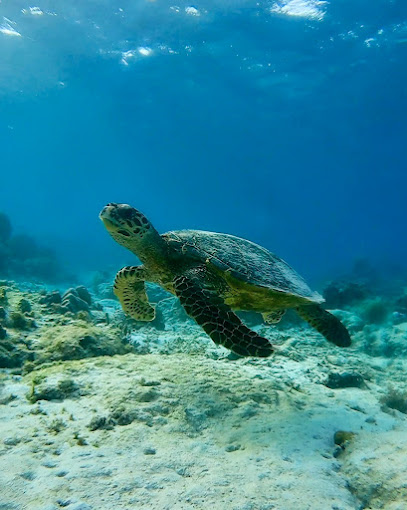
Sandy beach Turtle Point Gili Air
Experience the serene beauty of Sandy Beach Turtle Point Gili Air, a tropical paradise perfect for relaxation, snorkeling, and enjoying local cuisine.
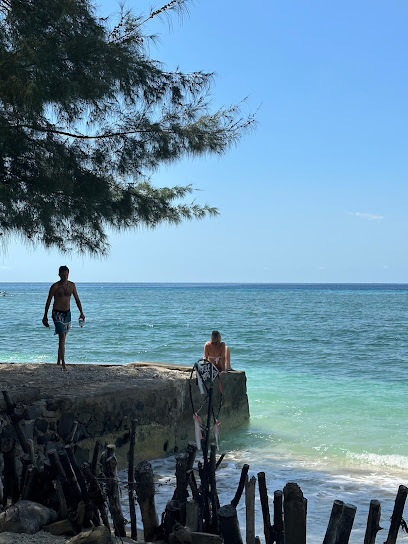
Turtle beach
Discover the breathtaking beauty of Turtle Beach in Gili Indah, a serene paradise perfect for relaxation, snorkeling, and sunset views.
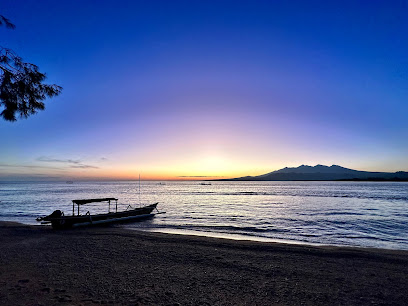
Turtle heaven
Discover the enchanting underwater world at Turtle Heaven, where swimming with sea turtles meets stunning coral reefs in Gili Meno, Indonesia.
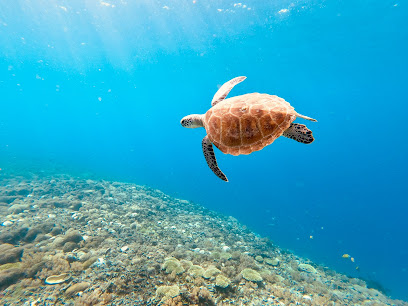
Turtle poin & whisky snorkling trip
Experience the enchanting underwater world at Turtle Point in Gili Trawangan, where vibrant marine life and stunning scenery await every snorkeler.
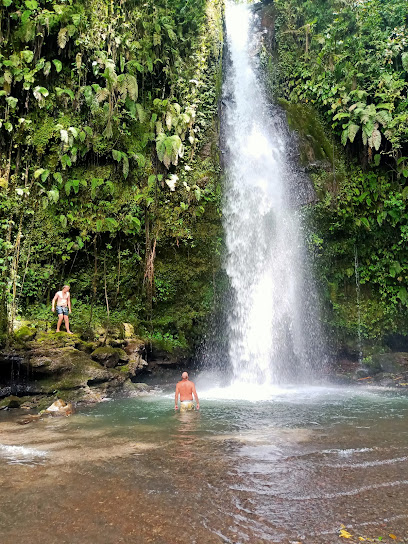
Kambing - Prettiest goat on the island
Explore Kambing, the prettiest goat on the island, and immerse yourself in the tranquil beauty of Lombok's Gili Indah.
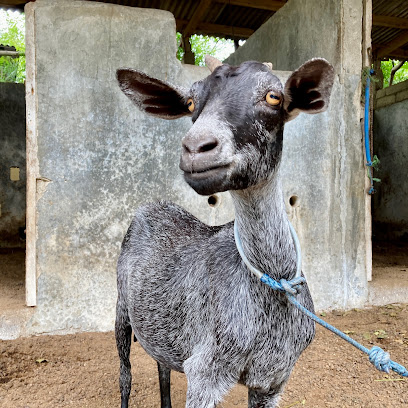
Coral view point
Experience the stunning Coral View Point in Lombok, where breathtaking coral reefs meet serene turquoise waters, perfect for snorkeling and relaxation.
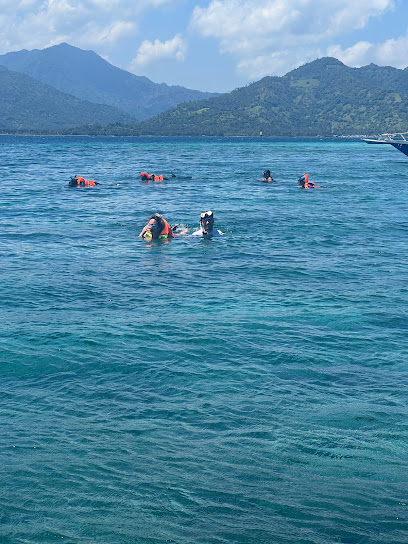
Essential places to dine
Jali Kitchen
Discover the unique flavors of Asia at Jali Kitchen in Gili Trawangan—where culinary excellence meets tropical charm.
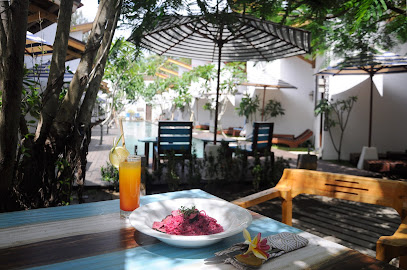
The Banyan Tree
Experience vibrant vegetarian and vegan cuisine at The Banyan Tree in Gili Trawangan—where health meets flavor amidst stunning island views.
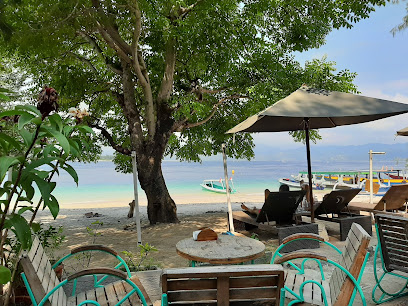
EGO BEACHFRONT RESTAURANT & BBQ
Experience exquisite seafood dining with breathtaking ocean views at EGO Beachfront Restaurant & BBQ on Gili Trawangan.
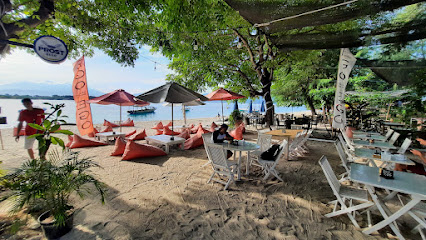
Natys Restaurant
Savor fresh seafood delights in a vibrant atmosphere at Natys Restaurant on Gili Terawangan – where every meal is an island adventure.
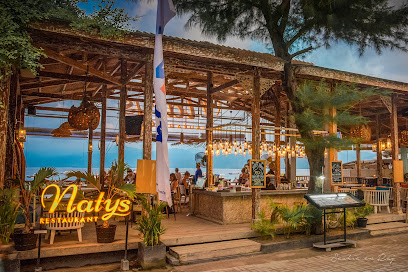
Pituq Café
Discover Pituq Café on Gili Air – where vibrant vegan cuisine meets stunning tropical views.
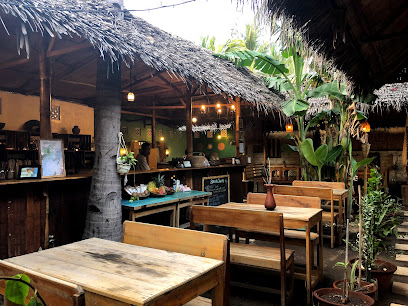
Scallywags Restaurant
Experience the best seafood dining at Scallywags Restaurant in Gili Indah – where fresh flavors meet breathtaking island views.
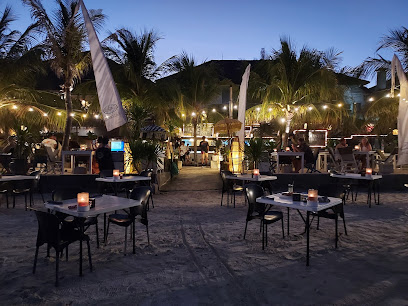
La Moomba Bar & Restaurant
Discover La Moomba Bar & Restaurant on Gili Trawangan for exquisite European cuisine in a tropical paradise setting.

My House
Experience the perfect blend of Italian flavors and local ingredients at My House Restaurant in Gili Indah, North Lombok.
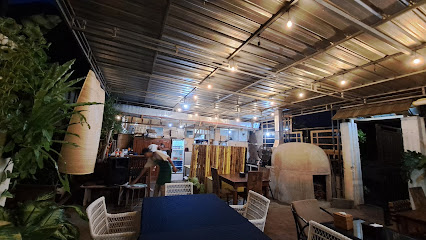
Warung Jaman Now
Experience the vibrant flavors of Indonesia at Warung Jaman Now in Gili Trawangan - where local cuisine meets modern flair.
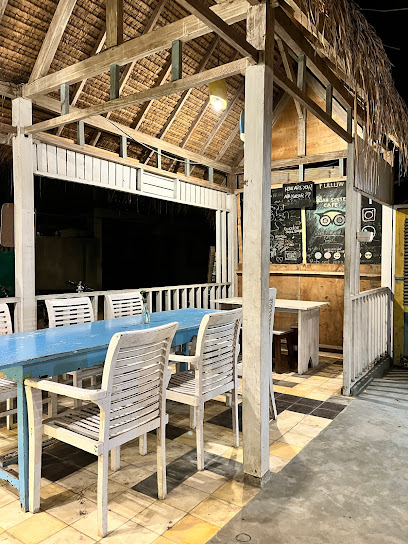
Fat Cats Bar & Restaurant
Experience vibrant dining at Fat Cats Bar & Restaurant on Gili Trawangan—where delicious food meets stunning beach views.
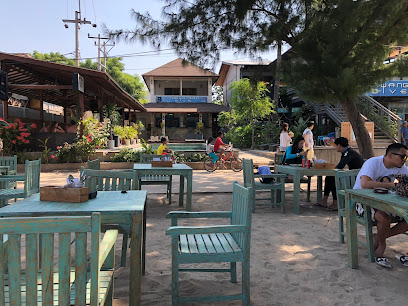
Ya Ya Warung
Discover authentic Indonesian flavors and delightful Italian dishes at Ya Ya Warung on Gili Meno Island – an affordable culinary gem!
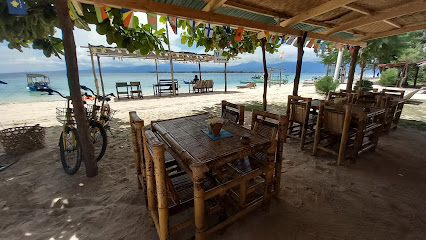
Mama’s Garden
Discover the vibrant flavors of Indonesia at Mama's Garden - a vegan-friendly haven set in lush surroundings on Gili Indah.
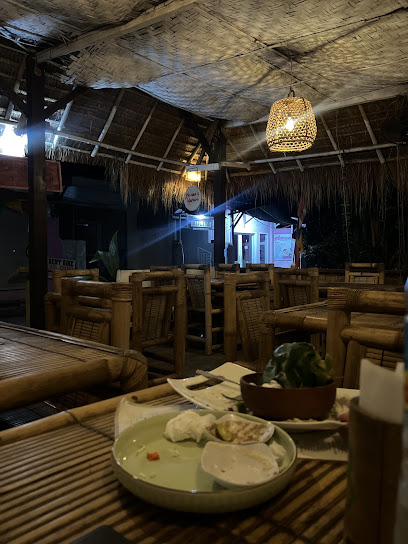
Juku Marlin
Experience the best of Indonesian seafood at Juku Marlin on Gili Trawangan – where every meal is a taste of paradise.
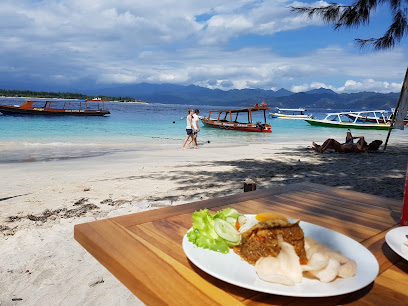
Santi Beach Restaurant Gili Trawangan
Discover culinary delights at Santi Beach Restaurant in Gili Trawangan – where exquisite flavors meet breathtaking ocean views.
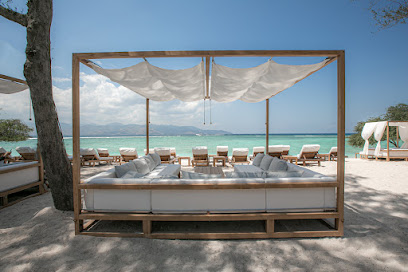
Olala cafe
Experience the vibrant taste of Thailand at Olala Cafe in Gili Indah - where every dish tells a story.
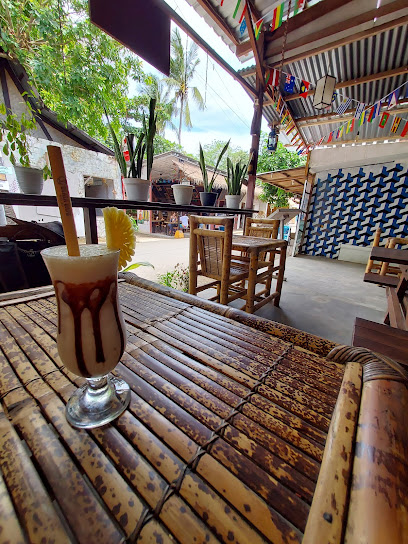
Markets, malls and hidden boutiques
Art shop and Pearl jewelry
Explore unique pearl jewelry and local art in Gili Trawangan's charming art shop, a treasure trove for every traveler seeking authentic souvenirs.
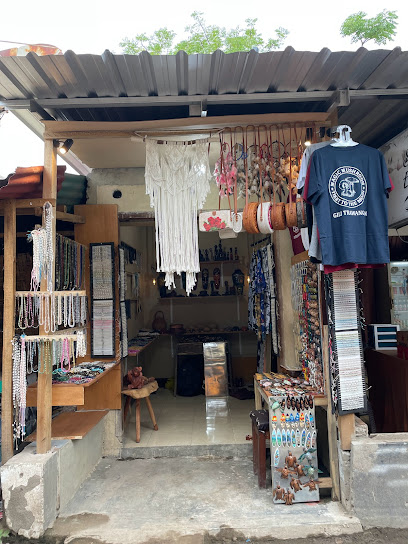
Billabong Gili Trawangan
Explore island-inspired fashion at Billabong Gili Trawangan, a must-visit clothing store in the heart of paradise.
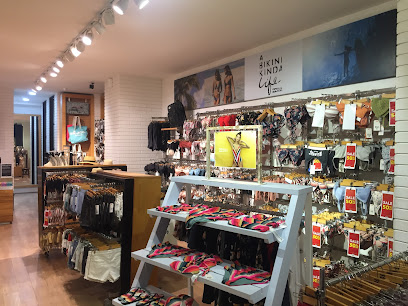
EMI shop
Explore EMI Shop in Gili Indah for unique gifts and authentic Lombok handicrafts that capture the essence of your travels.
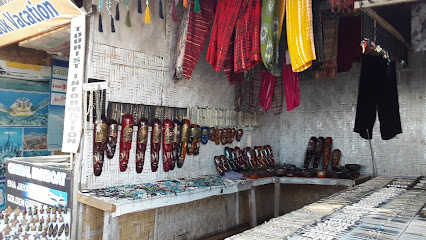
Dewerstone indonesia
Discover Dewerstone in Gili Trawangan for top-notch outdoor clothing and gear, ensuring your adventures in paradise are unforgettable.
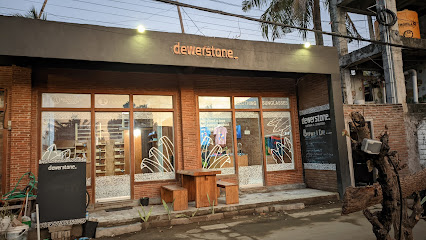
Gilily Boutique
Explore Gilily Boutique on Gili Trawangan for stylish apparel and accessories that capture the essence of island life and fashion.
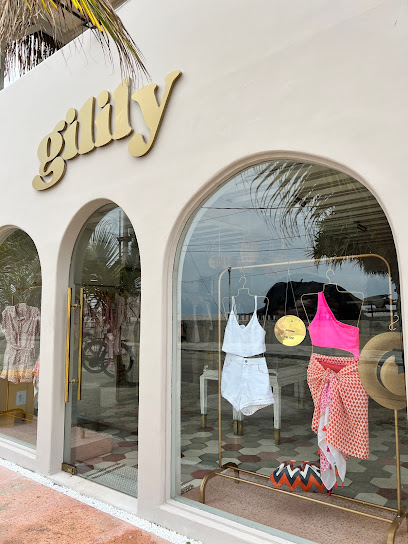
Lost In Paradise Gili T
Discover unique tropical fashion at Lost In Paradise Gili T, a vibrant clothing store in the heart of Gili Trawangan's stunning scenery.
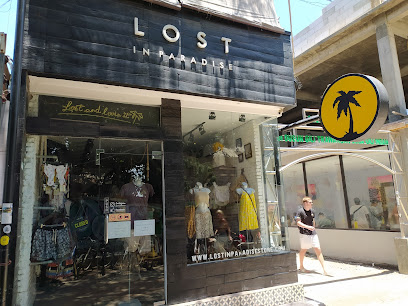
Rip Curl - Gili Trawangan
Explore Rip Curl - Gili Trawangan for the best in surfwear and beach essentials, blending style with the island's vibrant surf culture.
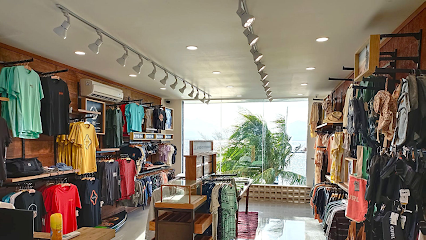
Golden Shop
Explore Golden Shop in Gili Trawangan for authentic Indonesian crafts and unique souvenirs, capturing the island's cultural spirit.
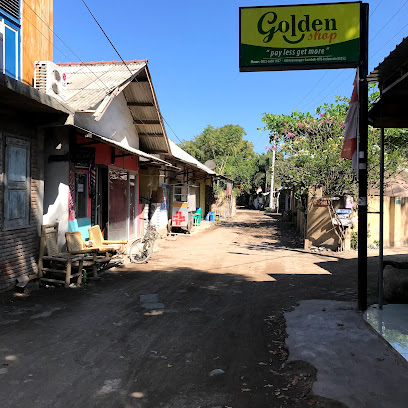
Stone House Gili Air
Explore the heart of Gili Air at Stone House, where local crafts meet island charm in a delightful gift shop experience.
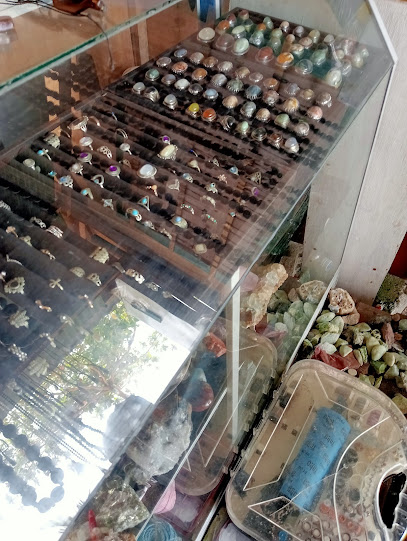
69 Slam Premium
Discover the vibrant beachwear and unique fashion styles at 69 Slam Premium on Gili Trawangan, your ultimate shopping destination.
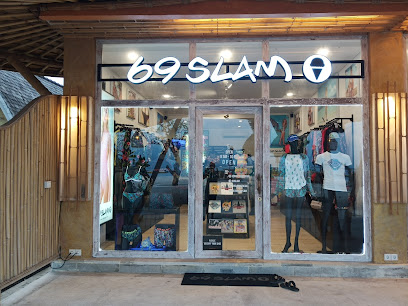
Frankie's Coconut Shop
Discover unique souvenirs and local crafts at Frankie's Coconut Shop in Gili Air, where island charm meets vibrant shopping.
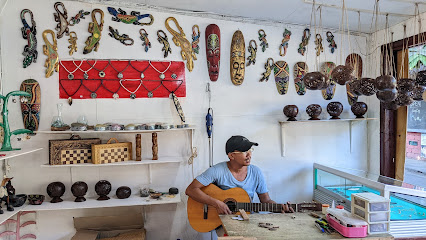
Arman Shop
Explore local flavors at Arman Shop in Gili Trawangan – your go-to grocery store for fresh produce and unique Indonesian delicacies.
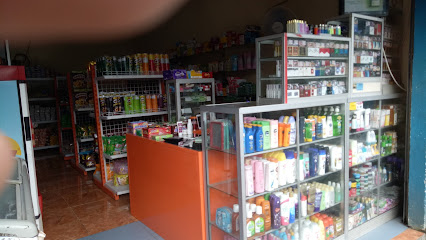
Karma Shop
Discover unique souvenirs and local crafts at Karma Shop on Gili Air, where culture meets creativity in every handcrafted piece.
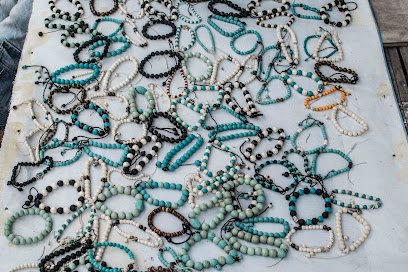
Infinity
Explore Infinity Boutique in Gili Trawangan for exclusive dresses and jewelry, embodying the spirit of island elegance and craftsmanship.
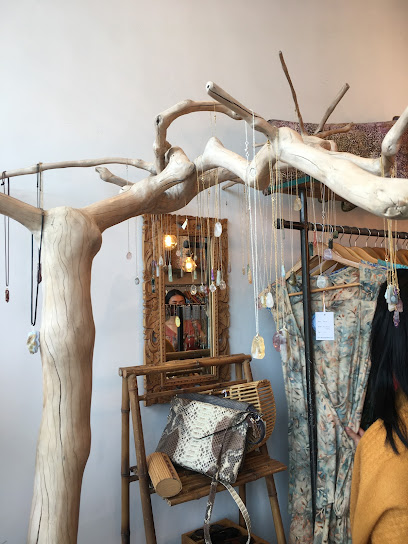
Coconut Hidup
Explore Coconut Hidup, a delightful gift shop in North Lombok where unique souvenirs and tropical treasures await every traveler.
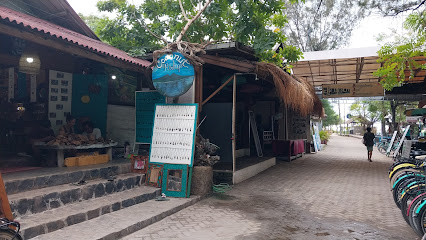
Essential bars & hidden hideouts
Sama-Sama Reggae Bar
Experience the vibrant culture of Gili Trawangan at Sama-Sama Reggae Bar, where great food, drinks, and live music create unforgettable memories.
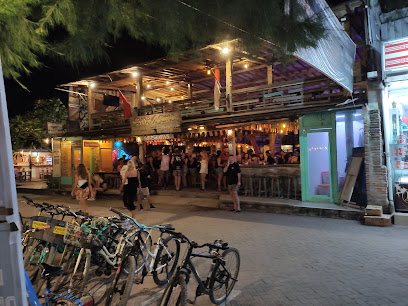
Legend Bar Gili Air
Experience the vibrant atmosphere of Legend Bar Gili Air, a beachfront gem offering delicious food, refreshing drinks, and breathtaking sunsets.
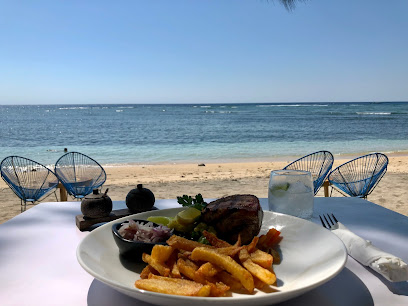
Lava Bar
Experience the vibrant atmosphere and stunning sunsets at Lava Bar, the perfect beachfront escape on Gili Trawangan.

Irish Bar Gili
Discover the lively atmosphere of Irish Bar Gili, where traditional Irish hospitality meets the tropical charm of Gili Trawangan.
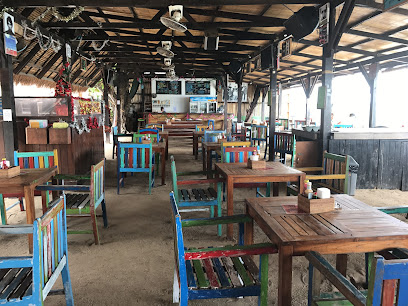
Luckys Bar
Discover Lucky's Bar on Gili Air—where relaxation meets vibrant nightlife amidst stunning island views.
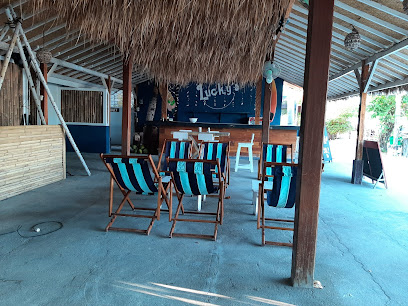
I Am Bagus SPORT BAR
I Am Bagus Sport Bar in Gili Indah offers a vibrant atmosphere, delicious food, and live sports for an unforgettable night out.
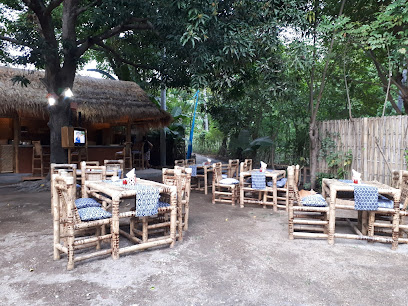
Sunset Bar
Experience the breathtaking sunsets and vibrant atmosphere at Sunset Bar on Gili Trawangan, the perfect spot to unwind and enjoy island life.
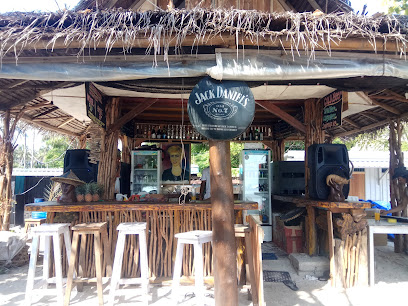
Paradise Sunset
Experience stunning sunsets and refreshing drinks at Paradise Sunset, a serene bar in Gili Trawangan, perfect for relaxation and enjoyment.
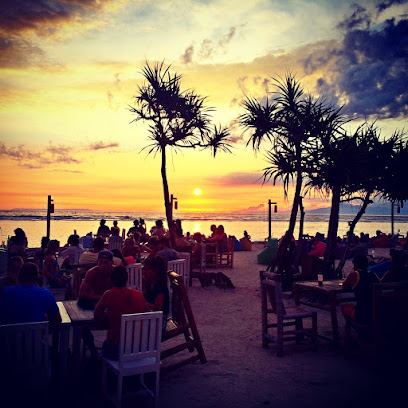
Window Bar | Sunset Bar & Cocktails
Experience breathtaking sunsets with exquisite cocktails at Window Bar, Gili Trawangan's ultimate beachside retreat for tourists.
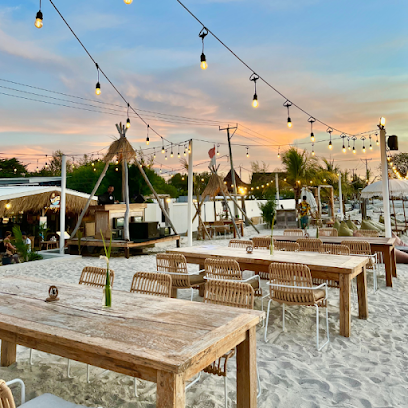
The Jungle Bar
Experience enchanting nightlife at The Jungle Bar on Gili Trawangan, where vibrant cocktails and lively music create unforgettable memories.
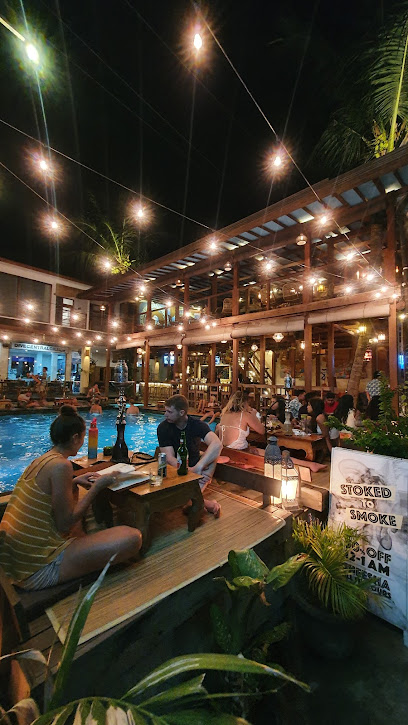
Mr.bean bar
Discover the lively ambiance of Mr. Bean Bar on Gili Trawangan, where refreshing cocktails and unforgettable nightlife await.
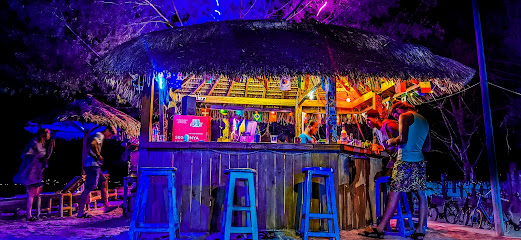
Ombak Bar
Experience the vibrant nightlife at Ombak Bar in Gili Trawangan, a perfect blend of refreshing drinks, stunning views, and a lively atmosphere.
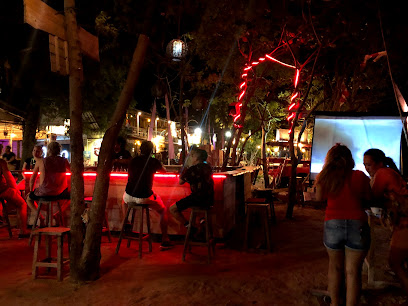
Gili Bong Bar
Experience the vibrant atmosphere and breathtaking views at Gili Bong Bar, the perfect beachside retreat on Gili Trawangan.
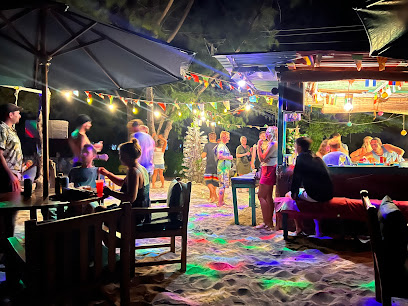
Owl Bar
Experience the vibrant nightlife and tropical charm of Owl Bar in Gili Trawangan, where every sunset is a celebration.
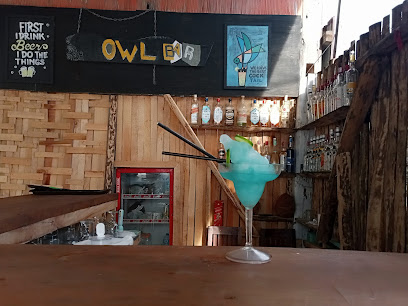
follow the sun bar and grill
Savor delicious grilled dishes and refreshing cocktails at Follow the Sun Bar and Grill, a vibrant hub in Gili Trawangan with stunning beach views.
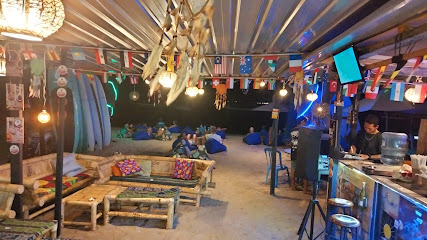
Local Phrases about Gili Islands
-
- HelloSelamat pagi
[suh-lah-maht pah-gee] - GoodbyeSelamat tinggal
[suh-lah-maht ting-gahl] - YesYa
[yah] - NoTidak
[tee-dahk] - Please/You're welcomeSilakan
[see-lah-kahn] - Thank youTerima kasih
[tuh-ree-mah kah-see] - Excuse me/SorryMaaf
[mah-ahf] - How are you?Apa kabar?
[ah-pah kah-bahr] - Fine. And you?Baik. Dan kamu?
[bah-eek. dahn kah-moo] - Do you speak English?Bisa bicara bahasa Inggris?
[bee-sah bee-chah-rah bah-hah-sah eeng-grees] - I don't understandSaya tidak mengerti
[sah-yah tee-dahk muhng-ehr-tee]
- HelloSelamat pagi
-
- I'd like to see the menu, pleaseSaya ingin melihat menu, tolong
[sah-yah een-geen muh-lee-aht muh-noo toh-lohng] - I don't eat meatSaya tidak makan daging
[sah-yah tee-dahk mah-kahn dah-yahng] - Cheers!Selamat minum!
[suh-lah-maht mee-noom] - I would like to pay, pleaseSaya ingin membayar, tolong
[sah-yah een-geen muhm-bah-yahr toh-lohng]
- I'd like to see the menu, pleaseSaya ingin melihat menu, tolong
-
- Help!Tolong!
[toh-lohng] - Go away!Pergi!
[pehr-gee] - Call the Police!Panggil polisi!
[pahng-geel poh-lee-see] - Call a doctor!Panggil dokter!
[pahng-geel dohk-tehr] - I'm lostSaya tersesat
[sah-yah tuhr-suh-saht] - I'm illSaya sakit
[sah-yah sah-keet]
- Help!Tolong!
-
- I'd like to buy...Saya ingin membeli...
[sah-yah een-geen muhm-buh-lee] - I'm just lookingSaya hanya melihat
[sah-yah hahn-yah muh-lee-aht] - How much is it?Berapa harganya?
[buh-rah-pah hahr-gahn-yah] - That's too expensiveItu terlalu mahal
[ee-too tuhr-lah-loo mah-hahl] - Can you lower the price?Bisa kurangi harganya?
[bee-sah koo-rahn-gee hahr-gahn-yah]
- I'd like to buy...Saya ingin membeli...
-
- What time is it?Jam berapa sekarang?
[jahm buh-rah-pah suh-kah-rahn] - It's one o'clockJam satu
[jahm sah-too] - Half past (10)Setengah (sepuluh)
[suh-tuhng-ah (suh-poo-loo)] - MorningPagi
[pah-gee] - AfternoonSore
[soh-reh] - EveningMalam
[mah-lahm] - YesterdayKemarin
[kuh-mah-reen] - TodayHari ini
[hah-ree ee-nee] - TomorrowBesok
[beh-sohk] - 1Satu
[sah-too] - 2Dua
[doo-ah] - 3Tiga
[tee-gah] - 4Empat
[uhm-paht] - 5Lima
[lee-mah] - 6Enam
[eh-nahm] - 7Tujuh
[too-joo] - 8Delapan
[duh-lah-pahn] - 9Sembilan
[suhm-bee-lahn] - 10Sepuluh
[suh-poo-loo]
- What time is it?Jam berapa sekarang?
-
- Where's a/the...?Di mana...
[dee mah-nah] - What's the address?Berapa alamatnya?
[buh-rah-pah ah-lah-mah-nyah] - Can you show me (on the map)?Bisa tunjukkan saya (di peta)?
[bee-sah toon-jook-kahn sah-yah (dee peh-tah)] - When's the next (bus)?Kapan yang berikutnya (bis)?
[kah-pahn yahng buh-ree-koot-nyah (bees)] - A ticket (to ....)Tiket (ke ....)
[tee-keht (keh ....)]
- Where's a/the...?Di mana...
History of Gili Islands
-
The Gili Islands, consisting of Gili Trawangan, Gili Meno, and Gili Air, were initially settled by the Sasak people from Lombok. Evidence of early settlements dates back to the 17th century, when small fishing villages began to form along the coastlines. These early inhabitants lived in simple bamboo huts and relied on fishing, farming, and trading for their livelihoods.
-
In the 19th century, the Gili Islands came under the influence of Dutch colonial rule as part of the Dutch East Indies. The islands were primarily used as a source of coconuts and other tropical produce. During this period, the local population was subject to Dutch taxation and labor policies, which significantly impacted their traditional way of life.
-
During World War II, the Gili Islands were occupied by Japanese forces. The islands' strategic location made them a valuable spot for military operations in the region. The Japanese occupation led to the construction of various military installations, some remnants of which can still be found on the islands today. The local population faced harsh conditions and forced labor during this time.
-
Following Indonesia's independence in 1945, the Gili Islands began to slowly develop their local infrastructure. The islands remained relatively isolated and underdeveloped until the late 20th century. The Indonesian government started to invest in basic amenities such as schools, healthcare centers, and transportation links to improve the quality of life for the residents.
-
The 1990s marked a significant turning point for the Gili Islands as they began to gain international attention as a tourist destination. Backpackers and scuba diving enthusiasts were among the first to discover the islands' natural beauty and vibrant marine life. This influx of tourists led to rapid development of the hospitality industry, with numerous hotels, restaurants, and dive shops cropping up across the islands.
-
With the rise in tourism, the Gili Islands have also faced challenges related to environmental conservation. Efforts have been made to preserve the coral reefs and marine ecosystems that attract so many visitors. Local organizations and international NGOs have initiated various conservation projects, such as coral reef restoration and waste management programs, to ensure the islands' natural beauty is maintained for future generations.
-
In recent years, there has been a renewed interest in preserving and promoting the cultural heritage of the Gili Islands. Local festivals, traditional Sasak dances, and crafts are being highlighted to offer tourists a more immersive cultural experience. This cultural revival aims to strengthen community identity and provide economic opportunities for local artisans and performers.
Gili Islands Essentials
-
The Gili Islands are located off the northwest coast of Lombok, Indonesia. The most common way to reach the islands is by taking a fast boat from Bali, which generally takes around 1.5 to 2.5 hours depending on the departure point. Alternatively, you can fly into Lombok International Airport and then take a taxi to Bangsal Harbor, followed by a public boat or speedboat to the Gili Islands. The boat ride from Bangsal Harbor to the islands usually takes about 30 minutes.
-
The Gili Islands are car-free zones, which means the primary modes of transportation are bicycles and horse-drawn carriages known as cidomos. Bicycles can be rented at various points across the islands. For longer distances or carrying luggage, cidomos are a practical option. Walking is also a viable and pleasant way to explore the islands, given their small size.
-
The official currency in Indonesia is the Indonesian Rupiah (IDR). While some hotels and restaurants on the Gili Islands accept credit cards, it is advisable to carry cash for smaller establishments and local markets. ATMs are available on Gili Trawangan, but they are less common on Gili Meno and Gili Air, so it's wise to withdraw sufficient cash before leaving Bali or Lombok.
-
The Gili Islands are generally safe for tourists, but it’s advisable to take standard precautions. Petty crimes such as pickpocketing can occur, especially in crowded areas. Avoid walking alone at night on secluded beaches and always keep an eye on your belongings. There are no specific high-crime areas targeting tourists, but it's best to stay vigilant and aware of your surroundings.
-
In case of emergency, dial 112 for immediate assistance. Each of the Gili Islands has a medical clinic, but for serious medical emergencies, evacuation to a hospital in Bali or Lombok may be necessary. Travel insurance that covers medical emergencies is highly recommended. Additionally, there are local police posts on the islands for reporting crimes or seeking help.
-
Fashion: Do wear lightweight, breathable clothing suitable for a tropical climate. Avoid wearing revealing swimwear away from the beach. Religion: Do respect local customs and traditions. Dress modestly when visiting places of worship. Public Transport: Do use bicycles or cidomos to get around. Don't try to bring motorized vehicles onto the islands. Greetings: Do greet people with a smile and a simple 'hello' or 'selamat pagi' (good morning). Eating & Drinking: Do try local dishes and seafood. Don't expect fast service; island life is laid-back and things move at a slower pace.
-
To experience the Gili Islands like a local, visit the night markets, especially on Gili Trawangan, where you can sample a variety of Indonesian street food. Engage with the local community and participate in beach clean-up events, which are often organized by local NGOs. Don't miss snorkeling or diving trips to explore the rich marine life around the islands, including the famous underwater statues near Gili Meno. For a unique experience, catch the sunset on the western beaches of Gili Trawangan.
Trending Landmarks in Gili Islands
-
Gili Trawangan
-
Casa Vintage Beach
-
Manta Dive Gili Trawangan
-
Gili Air
-
Pondok Santi Estate Luxury Beachside Resort
-
Pelabuhan Gili Trawangan
-
Private Trip Gili
-
Gili Meno Sea Turtle Sanctuary
-
Gili Meno island
-
Gili Trawangan Beach
-
Gili Meno
-
Karma Beach Gili Meno
-
Gili Castle Building 2
-
Gili Meno beach
-
Gili Meno Fresh-water Lake
Nearby Cities to Gili Islands
-
Things To Do in Surabaya
-
Things To Do in Makassar
-
Things To Do in Yogyakarta
-
Things To Do in Semarang
-
Things To Do in Balikpapan
-
Things To Do in Bandung
-
Things To Do in Suai
-
Things To Do in Bobonaro
-
Things To Do in Ermera
-
Things To Do in Gleno
-
Things To Do in Jakarta
-
Things To Do in Aileu
-
Things To Do in Dili
-
Things To Do in Same
-
Things To Do in Baucau









